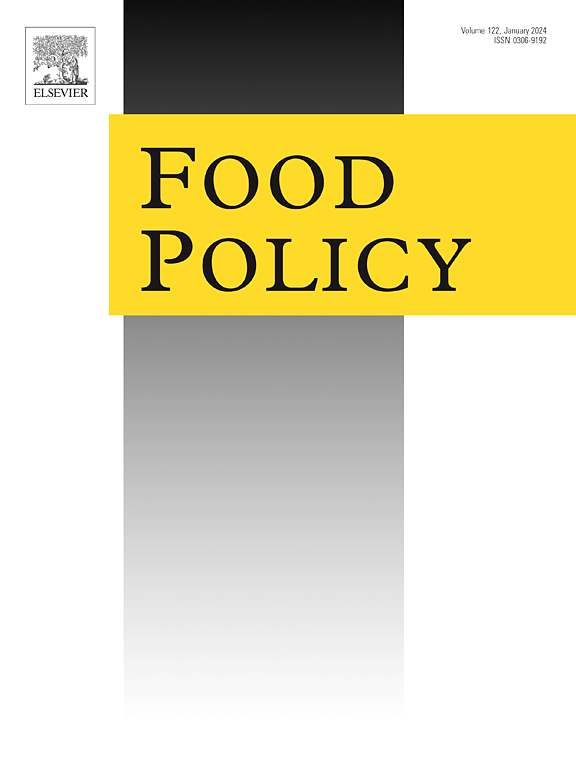Diet quality and micronutrient intakes in nutritional value chains: A synthesis and suggestions for further research
IF 6
1区 经济学
Q1 AGRICULTURAL ECONOMICS & POLICY
引用次数: 0
Abstract
This paper provides an overview of a virtual collection of papers analyzing drivers of diet quality and micronutrient intakes, and what has been learnt from various interventions to address micronutrient malnutrition, the contexts in which they succeed, and factors that affect their impact. We frame this using a micronutrient value chain, to highlight the important linkages from farm to plate. Our focus is on representative studies along this value chain in low and middle income countries where micronutrient malnutrition is most prevalent. The papers reviewed suggest that (a) both production diversity and market access work hand-in-hand to improve dietary quality. (b) However, the evidence on whether commercialization improves or reduces diet quality is context-specific and depends on whether markets exist for goods to be sold and micronutrient-rich foods purchased. (c) Not surprisingly, incomes and prices emerge as key factors affecting consumption decisions, with the cost of a healthy diet remaining unaffordable for many. Furthermore, the poor are most sensitive to changes in the relative prices of micronutrient-rich foods. (d) Also important is how food is consumed within the household: the review suggests that social context matters greatly in assessing relationships between women’s empowerment and diet quality. We then review several supply and demand side interventions, and note that while many are successful, not all are easily transferable, and thus may need adaptation to local contexts. We conclude with a set of ten areas that remain open for further research.
营养价值链中的膳食质量与微量营养素摄入:综述及进一步研究建议
本文概述了一系列分析饮食质量和微量营养素摄入驱动因素的论文,以及从解决微量营养素营养不良的各种干预措施中学到的东西、这些干预措施取得成功的背景以及影响其影响的因素。我们使用微量营养素价值链来构建这一框架,以突出从农场到餐盘的重要联系。我们的重点是在微量营养素营养不良最为普遍的低收入和中等收入国家开展这一价值链的代表性研究。综述的论文表明:(a)生产多样性和市场准入携手提高膳食质量。(b)然而,关于商业化是改善还是降低饮食质量的证据是根据具体情况而定的,取决于是否有市场出售商品和购买富含微量营养素的食品。(c)毫不奇怪,收入和价格成为影响消费决定的关键因素,健康饮食的费用对许多人来说仍然负担不起。此外,穷人对富含微量营养素的食物的相对价格变化最为敏感。(d)同样重要的是如何在家庭内消费食物:审查表明,在评估赋予妇女权力与饮食质量之间的关系时,社会背景非常重要。然后,我们回顾了几种供需侧干预措施,并注意到尽管许多干预措施是成功的,但并非所有干预措施都易于转移,因此可能需要根据当地情况进行调整。我们总结了10个有待进一步研究的领域。
本文章由计算机程序翻译,如有差异,请以英文原文为准。
求助全文
约1分钟内获得全文
求助全文
来源期刊

Food Policy
管理科学-农业经济与政策
CiteScore
11.40
自引率
4.60%
发文量
128
审稿时长
62 days
期刊介绍:
Food Policy is a multidisciplinary journal publishing original research and novel evidence on issues in the formulation, implementation, and evaluation of policies for the food sector in developing, transition, and advanced economies.
Our main focus is on the economic and social aspect of food policy, and we prioritize empirical studies informing international food policy debates. Provided that articles make a clear and explicit contribution to food policy debates of international interest, we consider papers from any of the social sciences. Papers from other disciplines (e.g., law) will be considered only if they provide a key policy contribution, and are written in a style which is accessible to a social science readership.
 求助内容:
求助内容: 应助结果提醒方式:
应助结果提醒方式:


